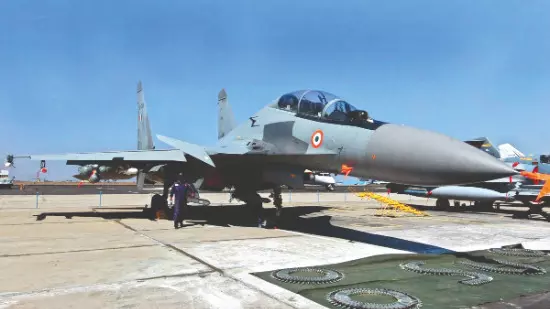Ayni airbase handover reflects India’s evolving strategic priorities in Eurasia

New Delhi: The Indian government on Thursday confirmed that India had a pilot arrangement with Tajikistan for the rehabilitation and development of an aerodrome, an understanding that remained in place for several years.
Following the end of this agreement, the facility was transferred to the Tajik authorities in 2022. The response of the Ministry of External Affairs to Millennium Post came amid renewed focus on reports that India has vacated its establishment at the Ayni Air Base in Tajikistan - an issue that has reignited debate about New Delhi’s strategic posture in Central Asia.
Ayni Air Base, also referred to as the Gissar Military Aerodrome, holds a peculiar position within India’s expanded security perimeter. Located near Dushanbe in Tajikistan and about 100 km from the Afghan border, the base offers a rare strategic vantage point in a region straddling China, Pakistan, Afghanistan, and Iran. Built during the Soviet era, Ayni came under the control of Tajikistan after the dissolution of the USSR in 1991. In the early 2000s, India had taken the lead in refurbishing the airbase, motivated by its rising concerns over terrorism and instability on Afghanistan’s soil.
The upgrade was led by India’s Border Roads Organisation, which completely revamped the facility - extending the runway to 3,200 meters and adding state-of-the-art air traffic control systems and air defence infrastructure, as well as hangars able to accommodate modern fighter aircraft. When it was finished in 2010, Ayni had become a fully modernised base, able to accommodate the full range of aircraft in the Indian Air Force’s inventory, including Su-30MKIs and Mirage-2000s - though India has never stationed combat aircraft there permanently.
India’s involvement at Ayni was far from being only a technical cooperation; it was genuinely strategic. The base potentially gave New Delhi an operational toehold for reaching out to Afghanistan and keeping a watch on the northwestern frontiers of Pakistan, which are vital in terms of the post-9/11 security environment.
It also acted as a silent balancer to the growing influence of China and Pakistan in Central Asia. Over time, deeper Chinese engagement through the Belt and Road Initiative, along with the developing military relationship with Tajikistan, has transformed the regional security architecture, while Pakistani outreach to Central Asia via Afghanistan has continued to take shape. In this evolving environment, India’s presence at Ayni, though small, signified its determination to remain an active balancing force in the region.
Reports say that Tajikistan’s decision not to extend the lease was under pressure from Russia and China, both of whom were reportedly wary of non-regional military personnel operating from the base. Following India’s withdrawal—completed by early 2023—Russian forces are believed to have taken over control of the facility.
But for India, the strategic significance of Central Asia goes well beyond the realm of the military. The region’s vast reserves of hydrocarbons and minerals, along with its status as a crucial node in connectivity endeavours such as the International North-South Transport Corridor, make it a significant factor in the realisation of India’s twin goals of energy security and greater Eurasian engagement.



